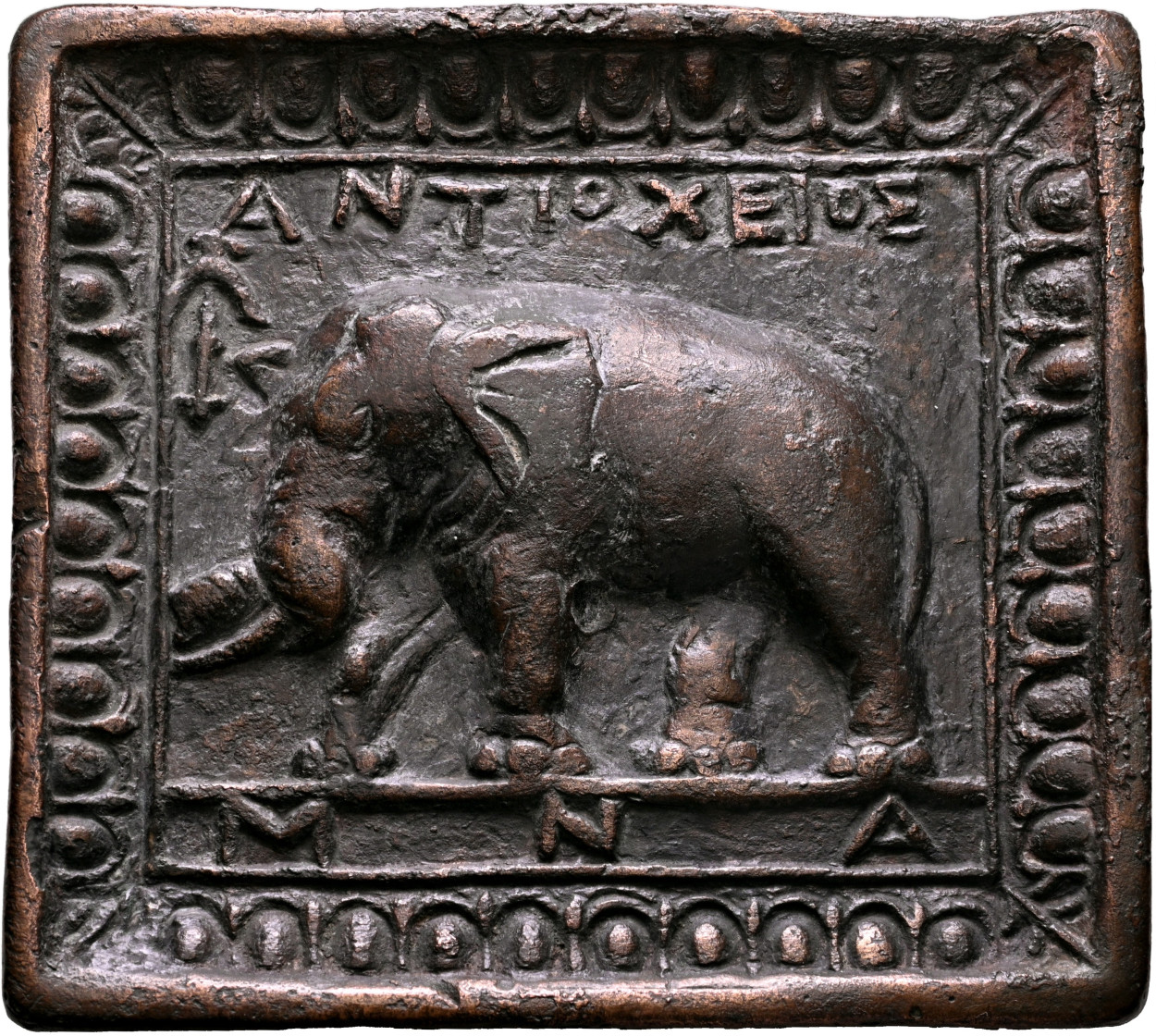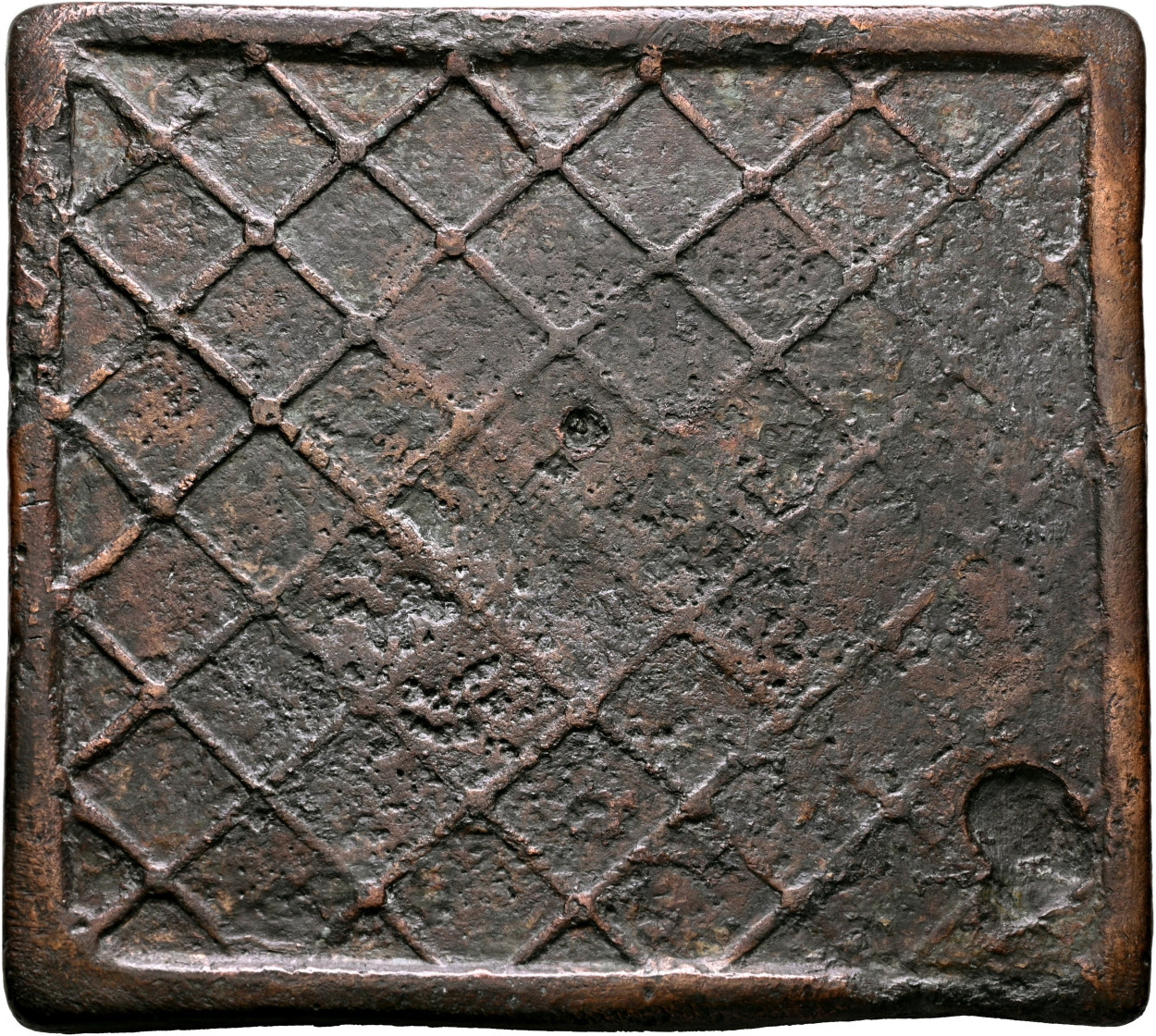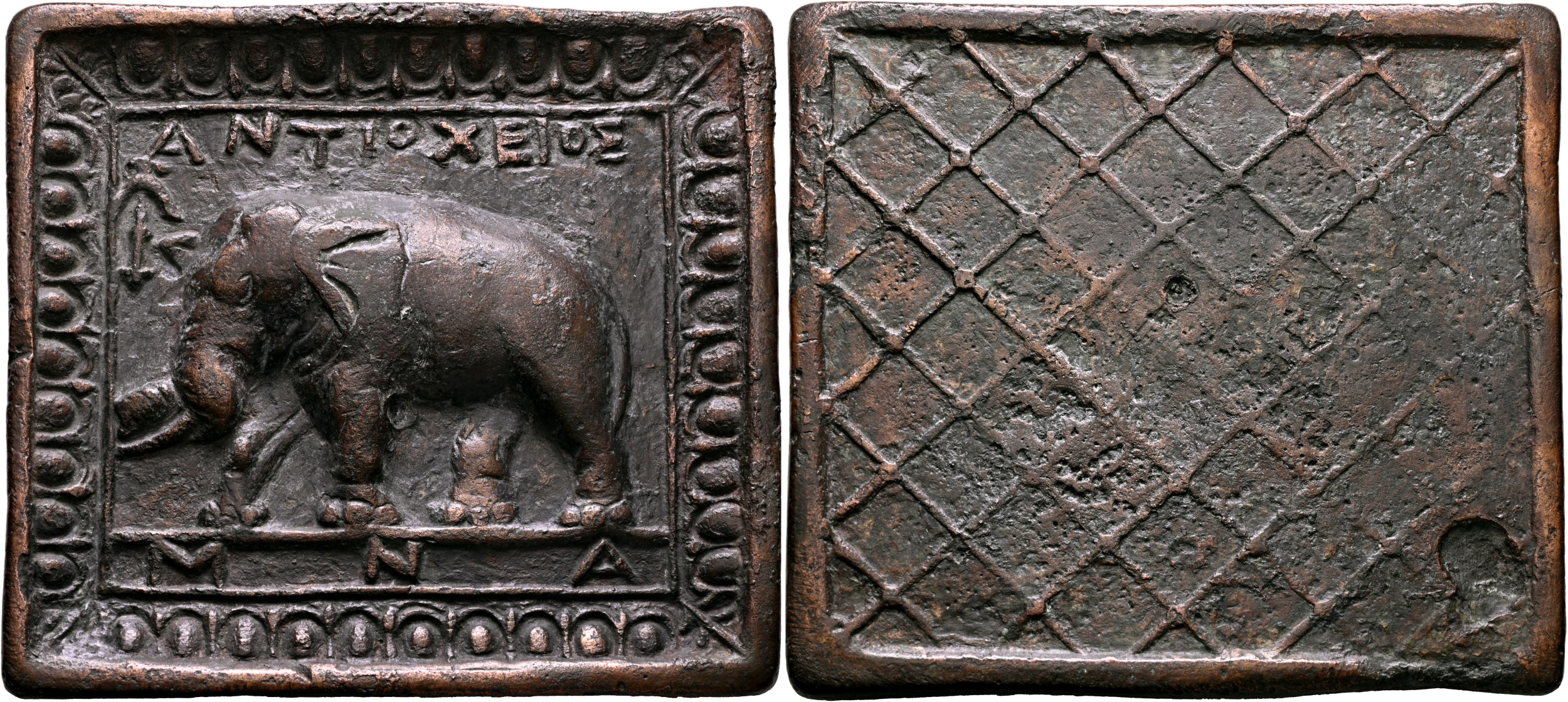
-
Copyright credit: Auction Leu 2025

-
Copyright credit: Auction Leu 2025

-
Copyright credit: Auction Leu 2025

ARCHAEOLOGICAL DESCRIPTION OF THE WEIGHT
Authority
Mint
Antioch
Denomination
1 Mina
Material
Copper alloy (bronze or brass)
Manufacture
Cast
Shape
Square
Length
9.00 cm
Width
9.10 cm
Height
0.00 cm
Metrology
| Mass (g) | Mass (grain) | Date of measurement | Reference | fragmented | cleaned | reference weight |
|---|---|---|---|---|---|---|
| 501.00 | - | - | Auction Leu 2025 | No | No | Yes |
Iconography
| Symbol | Technique | Direction | Position | Number | Synecdoche |
|---|---|---|---|---|---|
| Elephant | Relief | LEFT | Walking | ||
| Anchor | Relief | ||||
| Lattice pattern | Relief | ||||
| Egg and dart pattern | Relief |
Wear
Corrosion
Handle
No
Suspension hole
No
Recarved mould
No
Recarved weight
No
Intentionally destroyed
No
Archaeological description
Auction Leu 2025: SYRIA, Seleucis and Pieria. Antiochia on the Orontes, 3rd-2nd centuries BC. Weight of 1 Mina (Bronze, 90x91 mm, 501.00 g). Indian elephant walking to the left; above, ANTIOXEIOΣ; in upper left field, Seleukid anchor; below ground line, MNA; all within decorative collonaded border with plant ornament in the edges. Rev. Lattice work design. Pondera -, cf. 543 (with the name of a magistrate) and 484 (similar design, but from Seleukeia in Pieria). Unpublished and unique. A highly impressive large Seleukid commercial weight. Minor roughness and with some metal faults on the reverse, otherwise, good very fine.
Autopsy
No
INSCRIPTION
| Language | Technique | Legend type |
|---|---|---|
| Greek | Relief | Denomination, Mint |
Fac simile
ΑΝΤΙΟΧΕΙΟΣ
Μ Ν Α
Edition
Ἀντιόχειος | μνᾶ.
Monogram
ARCHAEOLOGICAL CONTEXT
Findspot (region)
Findspot (site)
context
CIRCUMSTANCES OF ACQUISITION
Region
City
Date of first acquisition
May 31, 2025
circumstances
Antiquities trade.
DATING OF THE WEIGHT
Curatorial Section
GREEK
Time frame
FROM
-300
TO
-100
Comments on Chronology
COLLECTION HISTORY
Collection
| Name | Date of acquisition | Inventory number |
|---|---|---|
| Antiquities Trade | May 31, 2025 | None |
Bibliography
| Reference | Page/Column | Reference (number) | Plate / Figure | Comment |
|---|---|---|---|---|
| Auction Leu 2025a | 162–163 | 253 | None | None |
VARIA
Additional comment
Auction Leu 2025: This impressive weight, weighing one mina, comes from Antiochia on the Orontes, one of the most important Seleukid foundations in northern Syria. While it refers to the city of Antiochia, the symbolism - particularly the anchor and the war elephant - remains unmistakably royal. The pachyderm and the anchor, both key symbols of the Seleukid dynasty, underscore the rulers' desire to project their power and sovereignty Elephants played a significant role in many Hellenistic armies, but after Seleukos' agreement with Chandragupta in 303 BC, in which 500 war elephants were exchanged for the cession of the Indian provinces, they became one of the defining symbols of the Seleukid Empire - alongside the anchor. In addition to their military role, elephants were also associated with India and with Dionysos' eastern campaigns, making them a fitting emblem for the kings of Asia. This weight has a counterpart in Pondera 484, which comes from Seleukeia in Pieria, Antiochia’s harbor city. Another piece from Antiochia (Pondera 543) likely dates from the post-Seleukid period, as it mentions a magistrate but omits the royal anchor. This shift reflects the change from royal symbols to those of civic authority, but the elephant, as a royal emblem, persists, linking it now to Antiochia, the last Seleukid royal residence
Permalink
External link